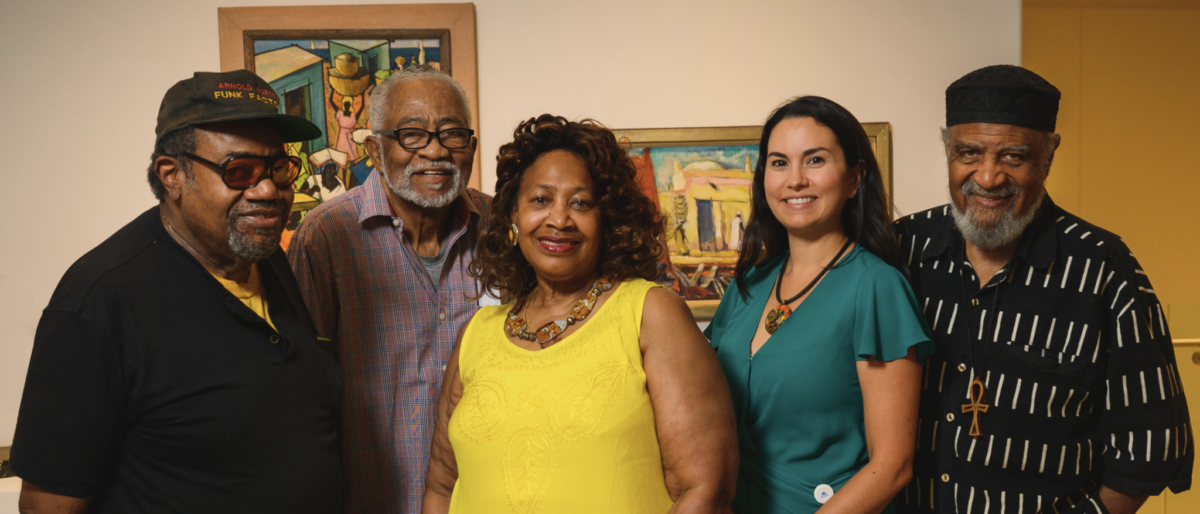With a new executive director, the Delaware Art Museum is emphasizing diversity and First State talent while undergoing a major reinstallation
Appropriately for the director of an art museum, Molly Giordano grew up surrounded by art and the tools to create it.
“Our whole house was full of art supplies,” she says of her childhood home in Morgantown, W. Va. “You’d open the silverware drawer and there might not be any forks, but there would be paint brushes in there.”
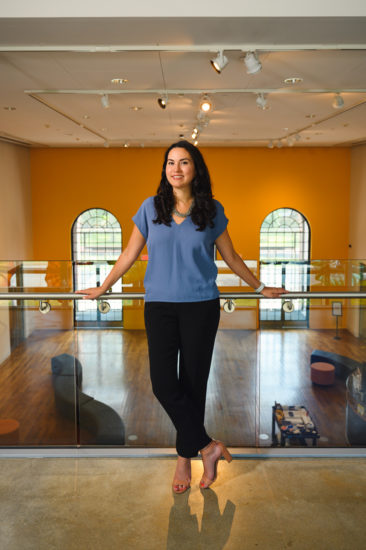
That was thanks largely to her mother. Susan Keresztury was an artist and art history professor who also managed the programs at the community art center in Morgantown.
Naturally, young Molly tried her hand at painting, but she and her brother gravitated to other art forms. She was interested in writing, and from an early age dreamed of getting her MFA (Master of Fine Arts). Nick, 18 months older, went into the theater. Meanwhile, her father, Jim, gave her a view into the nonprofit world through his career as a social worker specializing in cancer prevention and care among rural West Virginians.
Giordano came to Delaware in 2004 to attend UD, where she majored in political science and journalism, thinking she might become a political reporter. After graduation, she skipped the reporting part and went right into politics in 2008 by becoming a key member of Jack Markell’s first of two successful campaigns for governor.
Working on his communications team, she accompanied Markell in his journey up and down the state, including a “55 towns in 55 hours” marathon over the Fourth of July weekend. After the election, thinking she might want to follow in her dad’s footsteps, Giordano spent a year-and-a-half at West End Neighborhood House.
Then, in 2010, having decided neither politics nor social work was her future, she became manager of Marketing and Public Relations for the Delaware Art Museum.
Emerging from COVID
She then began a steady climb up the museum’s executive ladder (finding time along the way to achieve her childhood dream by earning a master’s degree in creative writing), and in February was named executive director after serving as interim director for 13 months. She succeeds Sam Sweet, whose four-year tenure ended last year.
Giordano steps into the job at a pivotal time in the history of the 109-year-old institution as it emerges from the impact of COVID-19, which necessitated a three-month shutdown. In addition to rebuilding visitation and in-person programming, the museum is in the midst of a major reinstallation of the main floor galleries, a project that will continue through the summer, with all eight reimagined galleries open by Saturday, Sept. 11. The project was shaped through input from focus groups that included more than 100 Delawareans.
This marks the first comprehensive DelArt rehanging since 2005. Since then, the collections have grown to include significant pieces by women and Black artists that tell a more inclusive story of the visual arts. The reinstallation also emphasizes the role of local artists and collectors in the history of art.
Fresh Eyes
Amelia Wiggins, assistant director of Learning and Engagement, says the focus groups, conducted in the winter of 2019, have been instrumental in determining the museum’s path forward.
“We invited representatives from a range of Wilmington communities and asked them to bring someone who had never been to the museum,” she says. “So we heard from those who understood our work and were involved in our work for a long time, but also from some first-time users who were coming with fresh eyes.
“We heard that Delawareans love local stories, and we heard quite a bit that some Delawareans didn’t feel they were represented in the galleries. So we worked hard to add stories that were previously untold. We tried to create a more relevant experience for them.” (For more on one of the exhibits, see sidebar on adjacent page.)
Contemporary Art Curator Margaret Winslow says the museum is “committed to diversity, committed to equity, committed to inclusion. And that means incorporating all of those voices and creating platforms for all of those voices to be heard.”
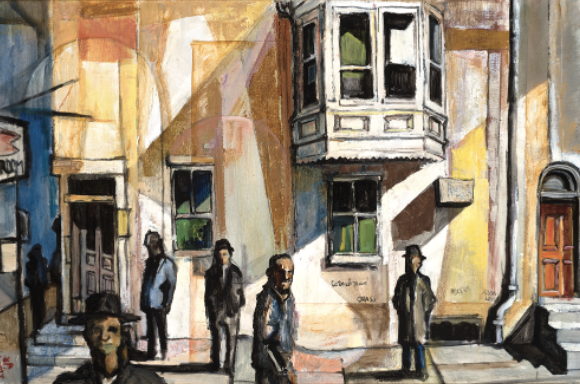
That has led to widening the scope of programs and content. “We have focused specifically on collecting work by women artists and artists of color, and filled major holes in the museum’s collection,” says Winslow. She says this is part of the museum’s role “as a leader in supporting systemic change in our communities, in Wilmington and Delaware, and expanding outward.”
The emphasis on diversity extends to membership as well: The museum is in the midst of a “100 Days of Summer” campaign whose goal is to add 100 members to the list that now totals about 1,400.
Meanwhile, the building and grounds on Wilmington’s Kentmere Parkways are a post-pandemic beehive of activity. Much of it is taking place outside on the Terrace or in the sprawling and impressive Sculpture Garden.
The popular Happy Hours, featuring live music, local brews, wine, cocktails, and food, are back on Thursdays from 4 to 8 p.m. DelArt Drive-In movies on the lawn of the Sculpture Garden began in July and continue through August and the first two weeks of September. The Friday movies are free, and typical movie concessions are available. Patrons only need to bring a chair.
There also are workshops and multi-week courses in painting, drawing, printmaking, photography, metalsmithing, ceramics, and writing, some of them virtual. Both children and adults — defined as age 15 and older — of any skill level are welcome.
Next spring, as part of its mission to spotlight Delaware talent, the museum will present two distinguished artists exhibitions: e. jean lanyon, an artist and writer who served as the state’s Poet Laureate for 22 years, and Stan Smokler, a metal sculptor and teacher.
A Moment to Reflect
While the pandemic caused the museum to close and suffer the ensuing loss of revenue, Giordano says it had at least one positive: “Closing gave us a good moment to pause and reflect. I think we’re going to be a better, healthier organization coming out of this than we were before.”
Looking ahead, she sees two major missions for the institution. The first is to create ongoing, not limited, relationships with other institutions, such as DCAD (Delaware College of Art and Design) and the University of Delaware. The second is an innovative effort aimed at what she calls “the creative economy.”
“Where are the jobs,” she asks, “and what are we doing to support people in our community in terms of things like creative workforce development?”
Though it’s not a done deal yet, Giordano says the museum is pursuing funding for a project that will train and pay Wilmington residents to clean, conserve, and document the public works of art in Wilmington.
“It’s all planned out and we are negotiating funding, so I don’t know exactly when it will start,” she says. “We are calling it the Sculpture Conservation/Workforce Training Program.”
The native West Virginian gained a deep appreciation for the First State and its people during the arduous 2008 gubernatorial campaign, and she has even persuaded her parents and brother to move here. That appreciation was reflected in her comments after she was named director six months ago: “I’m honored to lead the Museum into its next chapter. I consider art to be a public service, and it has been my great pleasure to help deliver that service to Delawareans — especially this year, when creativity, inspiration, and human connection are so needed.”
Afro-American Images 1971: The Vision of Percy Ricks
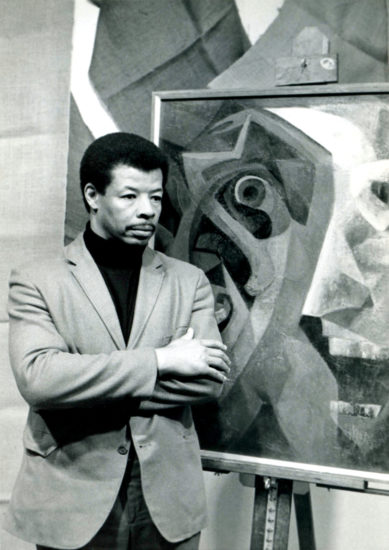
This exhibit, scheduled to open Oct. 23 and run through Jan. 23, 2022, “is a really deep look at an important historical moment and one that needs to be more thoroughly documented, explored and celebrated,” says Contemporary Art Curator Margaret Winslow.
The exhibit celebrates the 50th anniversary of the first major undertaking of Aesthetic Dynamics, Inc., a Delaware organization founded by Percy Ricks, a Wilmington artist and educator who died in 2008. The 1971 exhibition included more than 130 works of art — drawings, prints, photographs, paintings, and sculpture — by 66 African American artists.
Numerous factors led to Ricks’ founding of Aesthetic Dynamics and the ambitious inaugural exhibition, most notably the trauma suffered from the 1968 assassination of Martin Luther King Jr. and the subsequent nine-month National Guard occupation of Wilmington, along with Ricks’ desire to emphasize the influence of African American artists in Wilmington.
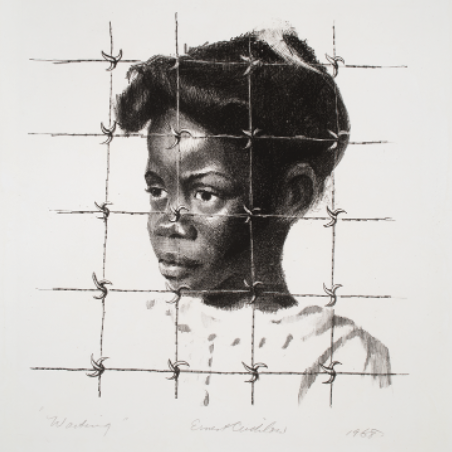
The exhibition is a collaboration between Aesthetic Dynamics and the Delaware Art Museum. “This aligns with the museum’s commitment to serving as an inclusive artistic hub in the city and working collaboratively with organizations throughout greater Wilmington, like Aesthetic Dynamics, Inc., to support creativity and access to the arts for all,” Winslow says.
“Afro-American Images 1971: The Vision of Percy Ricks” will include most of the artists who participated in the 1971 show. Many are known locally — Humbert Howard, Simmie Knox, Edward Loper Sr., and Edward Loper Jr. Some are recognized nationally, including Romare Bearden, Sam Gilliam, Loïs Mailou Jones, Faith Ringgold, Alma Thomas, and Hale Woodruff. By rehanging the show as accurately as possible, the partnering organizations hope to examine the exhibition’s role in the Black Arts Movement as well as question why this seemingly successful event was largely neglected by historians in the decades that followed.
The exhibit is free with admission to the museum.




